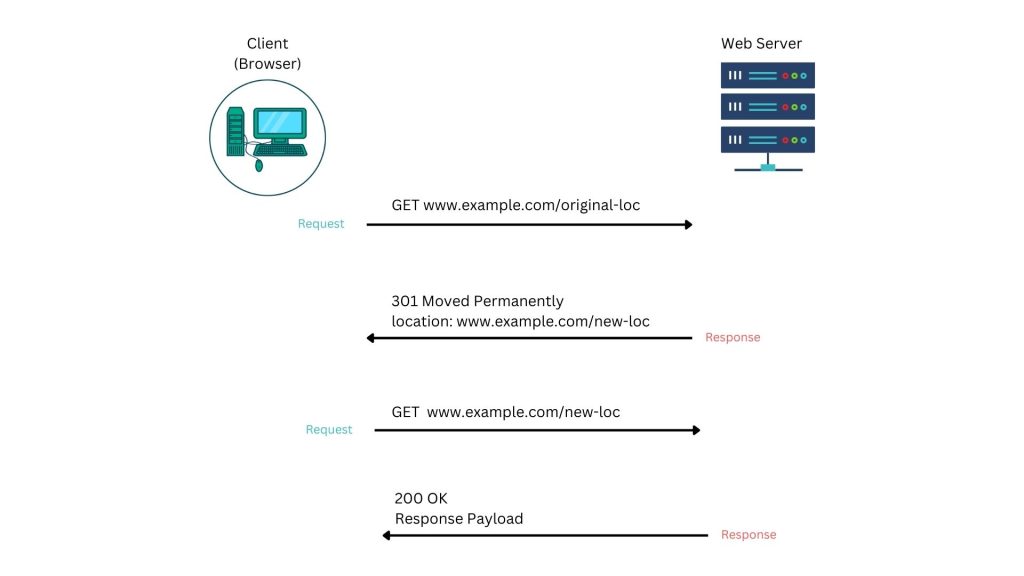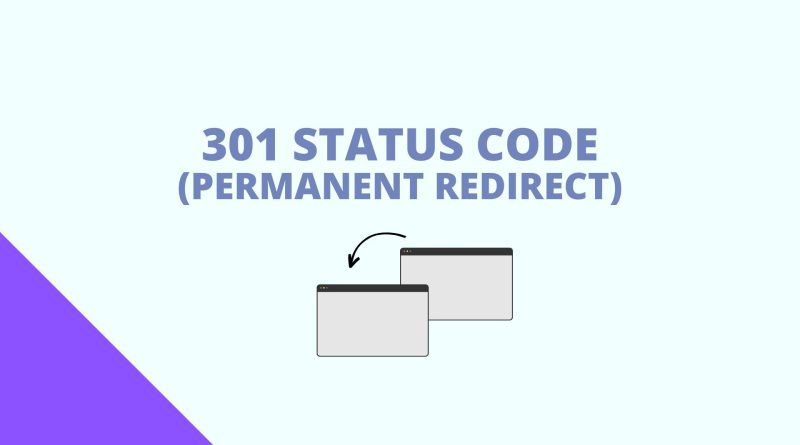301 Status Code: What Is It and How to Fix it?
Are you seeing a 301 status code on your website? You’re not the only one. As a web developer or site owner, it can be intimidating when non-standard responses like permanent redirects are returned for your web requests. To help guide through this issue and provide some clarity, we will discuss what a 301 status code is, along with how to implement or fix it.
What are HTTP Status Codes
HTTP Status Codes are the numerical codes that a server returns in response to a request method it receives from a client using Hypertext Transfer Protocol (HTTP). The http status code helps indicate whether the request is being successfully processed by the server and helps identify various kinds of errors if they occur. It is extremely important to understand http status codes when developing an application as they provide useful feedback which enables developers to determine why a specific http request was not properly processed and make sure all http requests have been properly handled.
What is 301 Permanent Redirect?
A 301 Permanent Redirect is an HTTP response status code that indicates the new location of a requested resource; this new location URL is to be used with future requests. In search engines, 301 redirects are used to help direct web traffic from one page to another and communicate ‘moved permanently’ messages between servers and browsers. The new URL replaces the old one in search engine result pages, ensuring visitors are taken to the new location instead of the old one when searching for information. It’s important for businesses to consider using a 301 Permanent Redirect when their sites undergo changes, as it can retain their website traffic and search engine rankings.
How does 301 Permanent Redirect work?

When a web server communicates with a browser in response to an HTTP request and determines that the web page has been permanently moved to a new location, the web server will send a 301 Moved Permanently server response code back to the browser along with the new location URL. When this happens, the browser will then automatically detect the new URL and it will request the web page from its new location so that users can still access what they need. In order for this process to take place successfully, both web servers and browsers must utilize precise communication protocols so they can exchange information accurately.
How to implement or fix 301 redirect
Some common ways of implementing or fixing a 301 include using server side programming, using redirect plugins and service-based tools, and writing rewrite rules within an .htaccess file.
301 redirect in Apache .htaccess file
If you are running an Apache server you can add redirect commands on the .htaccess file. Before adding the commands to the file, make sure the modrewrite module is loading. By default it’s loading but if it’s not you just need to loading on the Apache configuration using the following setting:
<IfModule mod_rewrite.c>
RewriteEngine On
</IfModule>Redirect individual url/page
Command: Redirect 301 /oldpage/ /newpage/
Example redirect from https://www.example.com/old-file.html to http://www.example.com/new-file.html :
RedirectPermanent http://www.example.com/old-file.html http://www.example.com/new-file.htmlOr
Redirect 301 http://www.example.com/old-file.html http://www.example.com/new-file.htmlRedirect plugins
1. Yoast SEO
It is a popular WordPress plugin that allows you to easily set up 301 redirects. Yoast SEO also includes a number of other features, such as the ability to optimize your website for specific keywords and social media integration.
2. Redirection
It is also a WordPress plugin that allows you to manage 301 redirects, 404 errors, and other aspects of your website’s redirects. Redirection also includes a number of features, such as the ability to track 404 errors and the ability to group redirects together.
3. Simple 301 Redirects
Another WordPress plugin that allows you to easily set up 301 redirects. Simple 301 Redirects also includes a number of features, such as the ability to specify the redirect destination for each post or page on your website.
4. WPML
It is also a WordPress plugin that allows you to manage multiple languages on your website. WPML also includes a number of features for managing translations, such as the ability to automatically generate translations for new content and the ability to manage translation memory.
5. Jetpack
A WordPress plugin that includes a number of features for managing your website. Jetpack also includes a number of features for managing 301 redirects, such as the ability to create redirect rules and the ability to manage redirect mappings.
redirect with service-based tools
1. Redirect Path
Redirect Path is a browser extension that helps to identify issues with website redirects. The extension highlights which redirects are being used, as well as any redirect chains that may be present. Additionally, Redirect Path will also show if there are any errors with the redirects, such as 404 errors.
2. Screaming Frog SEO Spider
Screaming Frog SEO Spider is a desktop program that can be used to crawl websites and identify issues with redirects. The program provides a detailed report of all the redirects present on a website, as well as any errors that may be associated with them. Additionally, Screaming Frog SEO Spider can be used to generate XML sitemaps, which can be helpful in troubleshooting redirect issues.
3. Google Search Console
Google Search Console is a free service offered by Google that helps website owners to monitor their website’s performance in the search results. Website owners can use Google Search Console to see if there are any issues with their website’s redirects, such as 404 errors. Additionally, Google Search Console can be used to submit sitemaps, which can help Google index a website more effectively.
4. Bing Webmaster Tools
Bing Webmaster Tools is a free service offered by Bing that helps website owners to monitor their website’s performance in the search results. Website owners can use Bing Webmaster Tools to see if there are any issues with their website’s redirects, such as 404 errors. Additionally, Bing Webmaster Tools can be used to submit sitemaps, which can help Bing index a website more effectively.
Similar http status codes to 301 status code
A 301 status code is an important HTTP status code that tells web browsers and search engines that a requested URL has been permanently moved to another location. As such, it is incredibly useful when you are redirecting URLs or want certain content to be permanently accessible from one specific URL. In addition to the 301 status code, there are several related http response codes that can help provide users with a better experience when visiting your website. The 302 Found response code indicates a temporary redirect, while the 303 response code directs a client to retrieve its representation from the target resource specified by Location header field. Finally, for permanent redirects (to substitute one permanent URI for another) both 308 Permanent Redirect and 307 Temporary Redirect can be used.
Difference between 301 redirects and 302 redirects
When it comes to page redirects, two types, 301 and 302, offer website owners different functions. A 301 redirect signifies a permanent change of web address, so any users visiting the old URL will be sent to the new one. This kind of redirect is beneficial when content has been moved to a new page or renamed over time. On the other hand, a 302 redirect is intended for websites that are providing only temporary changes or alterations. It signals search engines that there may be occasional changes to their content without having to make permanent changes. For users, no matter which kind of redirect is used, their browsers will automatically direct them to the correct destination with either type of redirection in place.
All HTTP status codes by categories
Informational responses
(100 – 199)



